Tom's Guide Verdict
This unlocked, 5.7-inch Android phone offers has a gorgeous aluminum design, a vibrant AMOLED screen and strong performance for under $500, but a weak camera holds it back.
Pros
- +
Attractive Design
- +
Gorgeous screen
- +
Great value
- +
Helpful built-in software
Cons
- -
Camera is sluggish and images look dim
- -
Below-average battery life
- -
Weak sound
Why you can trust Tom's Guide
Though pricier phablets like the $769 Google Pixel XL and Galaxy S7 Edge grab a lot of headlines, these days you can find a powerful, large-screen smartphone for under $500. The $499 Asus ZenFone 3 Deluxe gives you a vibrant 5.7-inch AMOLED display, powerful performance and a generous 64GB of storage space in a gorgeous aluminum body.
Sold unlocked in the U.S. and capable of running on GSM networks (T-Mobile, AT&T, etc.), the dual-SIM phone also offers a highly customizable skin on top of Android 6, along with some useful first-party software. All these features make the ZenFone 3 Deluxe a great-looking device at an attractive price, but poor camera performance holds it back, and some competitors offer similar features for less.
Design
With its aluminum, unibody chassis, diamond-cut edges and narrow bezels, the Asus ZenFone 3 Deluxe has an extremely attractive and premium design that puts more expensive phones to shame (cough, Pixel). Asus crows about its "invisible antenna design," which means that the device has a smooth back and sides, free of the antenna lines you see on most other smartphones.
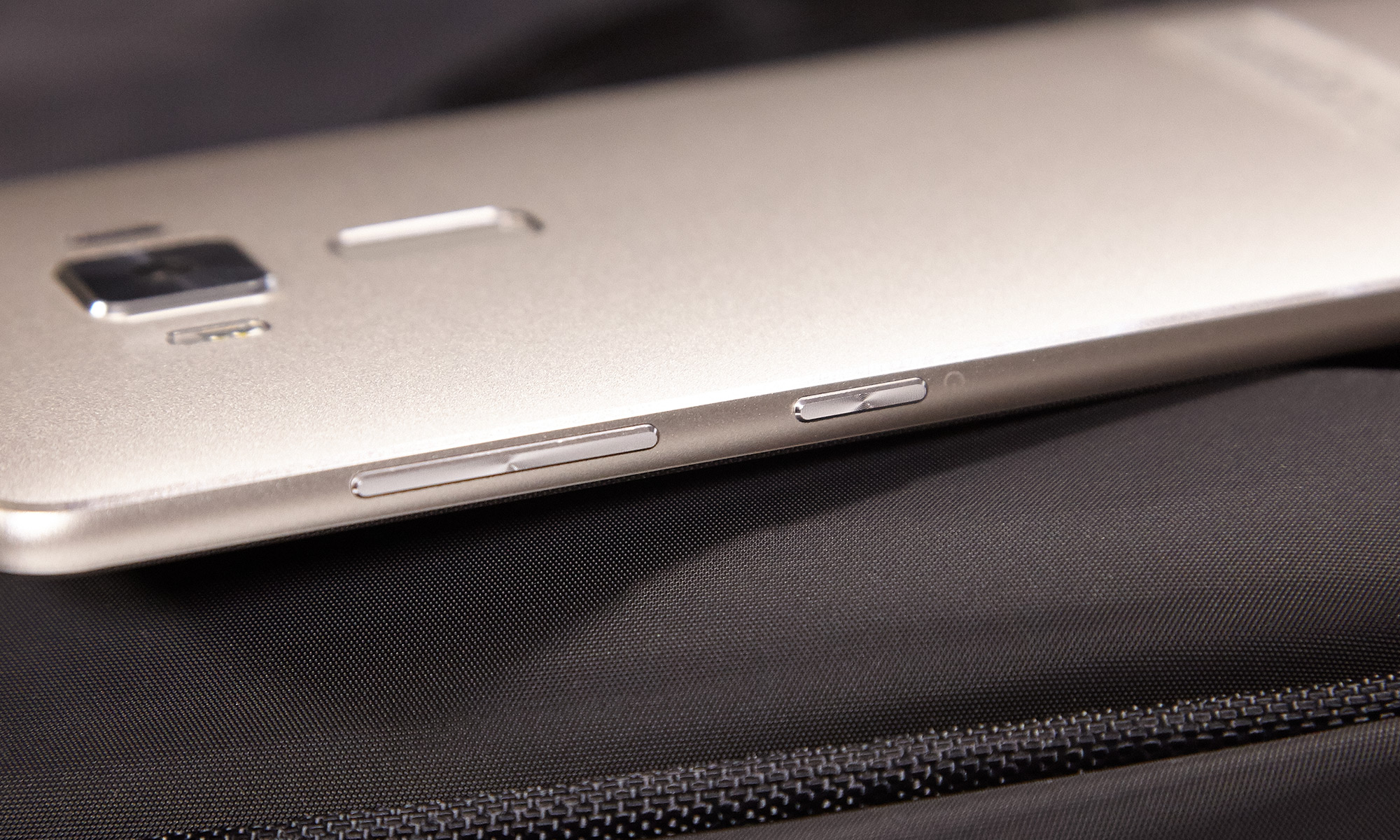
I was particularly impressed with the almost nonexistent side bezels on the front, along with the classy matte surface on the back, which holds a pleasantly square camera module and rectangular fingerprint scanner. In addition to the "Glacier Silver" color on our review unit which had a slight gold color and accents despite its name, the ZenFone 3 Deluxe also comes in a more intense "Sand Gold."
Like many other new handsets, the ZenFone 3 Deluxe uses a USB Type-C port for charging. However, unlike some competitors from Apple and Motorola, Asus' handset has a standard 3.5-mm audio jack. As with all unibody designs, the back is completely sealed, so you can't remove the 3,000-mAh battery inside, but you can access the dual SIM card / microSD card tray by sticking the included pin or a bent paperclip in the side.
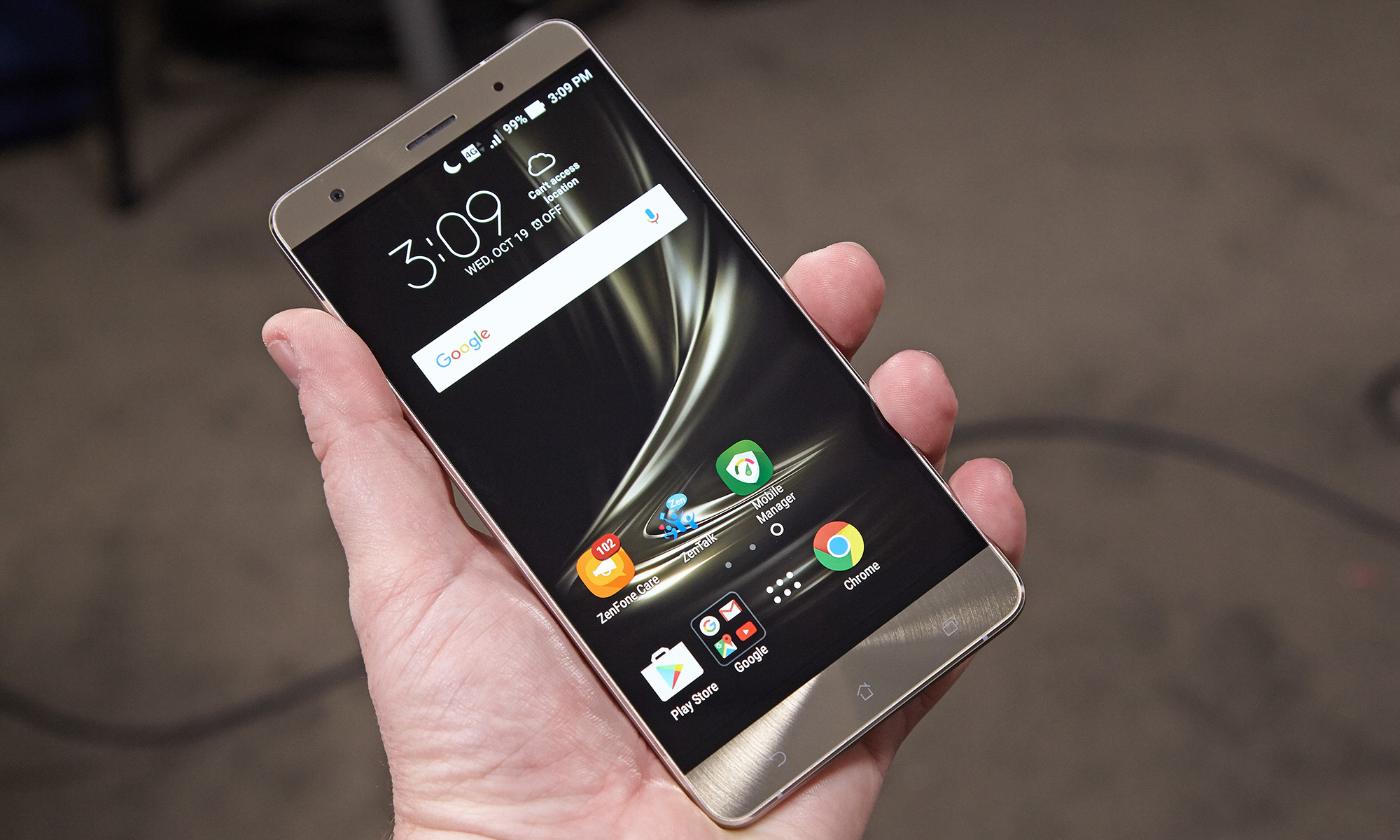
The memory card tray can hold two micro SIMs, a single micro SIM plus a microSD card for storage or one micro and one nano SIM. Having the ability to use microSD storage is a huge plus, because you can add 128GB, effectively tripling your capacity, for only $35.
At 6.16 x 3. x 0.3 inches and 6 ounces, the ZenFone 3 is fairly thin and light, especially for a phone with a 5.7-inch display. The device never felt too chunky, either in my hand or my pants pocket. Now that the Galaxy Note 7 is off the market, you won't find a lot of high-end handsets with 5.7-inch screens, and handsets with 5.5-inch displays like the Google Pixel XL (5.61 x 2.74 x 0.31 inches / 5.36 ounces) and OnePlus 3 (6.01 x 2.94 x 0.28 inches, 5.57 ounces) are a little bit more compact.
Get instant access to breaking news, the hottest reviews, great deals and helpful tips.
MORE: 10 Reasons Android Beats the iPhone
Display
The ZenFone 3 Deluxe's 5.7-inch, 1920 x 1080 AMOLED display is a joy to behold, offering some of the most beautiful colors I've seen on a phone. When I watched a 1080p trailer for Rogue One, I had to step back, because the orange sparks from explosions and green laser rays were so vivid that they seemed to jump off the screen.
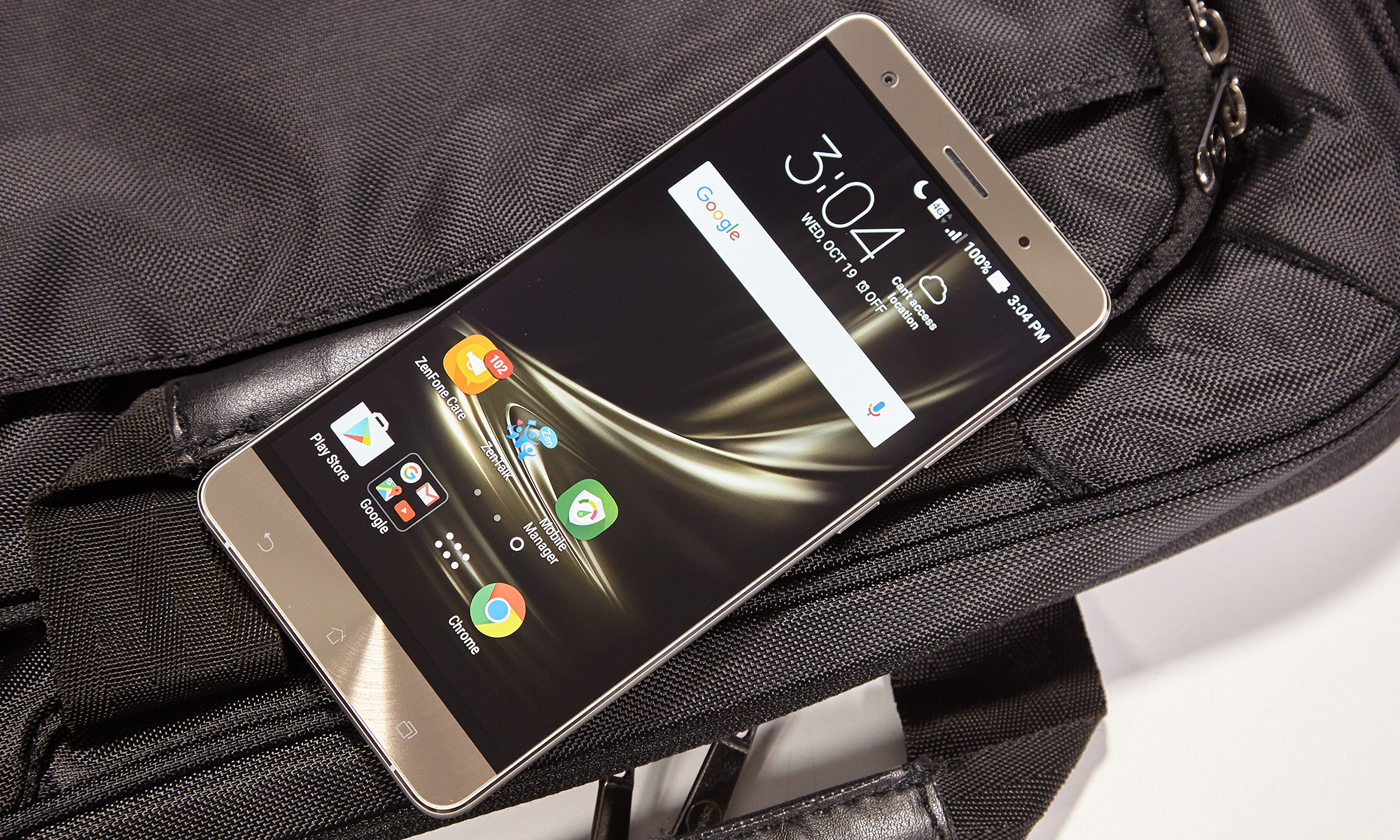
When I viewed the same trailer on the Pixel XL, which also has an AMOLED display, but with a higher, 2560 x 1440 resolution, the colors were no more colorful, but I did make out a small amount of additional detail.
Asus makes the display even more compelling by preloading Splendid, an app that provides a more detailed set of software color controls than you'll find on most other phones. With Splendid, you can choose between four major color modes: Super Color, Bluelight Filter, Standard and Customized. You can manually adjust the color temperature in all but Bluelight Filter mode. I enjoyed adjusting the hue, saturation and temperature manually, but would recommend using Super Color as your mode of choice, because it made reds and other shades pop a lot more, without making the trailer look out of balance.
According to our colorimeter, the Asus ZenFone 3 Deluxe can reproduce a fantastic 192 percent of the sRGB color gamut in Super Color mode and a still-strong 125 percent in standard mode. The top number is well above the category average of 139 percent, and it's nearly identical to the OnePlus 3 (192), Google Pixel XL (191), Alcatel Idol 4S (186) and Galaxy S7 Edge (189).
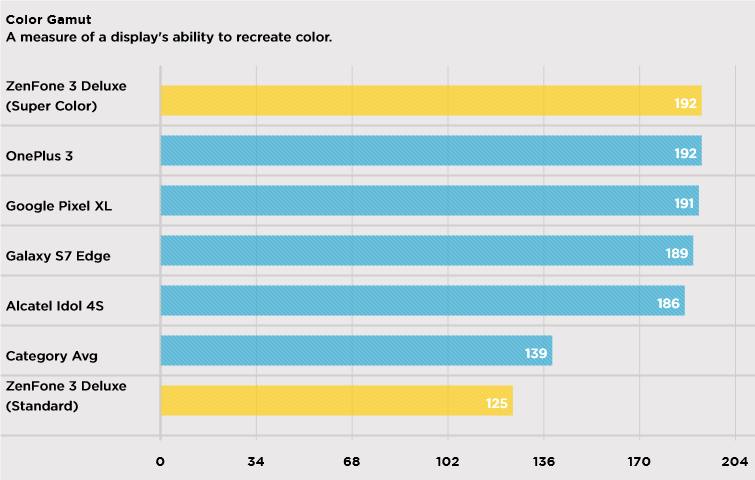
When I used it, the ZenFone 3 Deluxe's display was more than bright enough for both indoor and outdoor use, but it reached a modest 315 nits on our light meter, which is far below the 425-nit category average, Galaxy S7 Edge (530 nits), the Google Pixel XL (396 nits) and OnePlus 3 (379 nits).
Sound
The ZenFone 3 Deluxe comes with a pair of white earbuds — and that's a good thing, because the bottom-mounted speaker is anything but hi-fi. When I listened to a couple of pop songs, "Uptown Funk" and "Perfect Illusion," the output was just loud enough to fill our small lab, but it was filled with ugly distortion.
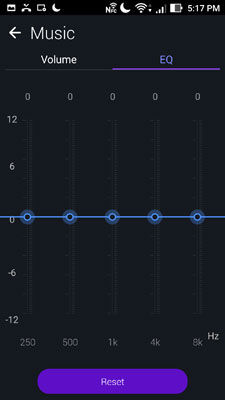
Even worse, if I held the phone by its bottom or leaned it against my chest (as I often do when holding a phone), the output because extremely muffled and hard to hear. The built-in Audio Wizard software lets you adjust the equalizer or choose between Movie, Music and Voice modes, but playing with these did little to improve the quality.
UI and Software
The ZenFone 3 Deluxe runs Android 6.0.1 Marshmallow with Asus' helpful and attractive ZenUI on top. While some purists prefer the plain look of stock Android that you find on phones like the Google Pixel XL, I found that Asus' software added a lot of value. I particularly appreciated its built-in theming capability, which allowed me to choose from dozens of designs, which change the wallpaper, icons and menu colors.

In any theme, the quick settings area, app drawer and full settings menu are vibrant and easy to navigate. Like most other non-Google phones, Asus uses hardware navigation buttons for home, back and recent apps so that it doesn't waste screen real estate.
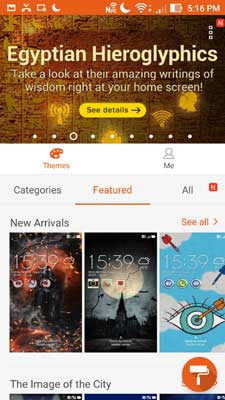
The phone also comes with several built-in ZenUI utilities, and many of them are quite helpful. I really like the FM radio app, which lets you tune into real stations as long as you have headphones plugged in. I also appreciated Mobile Manager, which gives you fine control over notifications and security settings, while offering various power-saving options and a performance booster that clears unnecessary apps from the memory.

The Do It Later app provides a helpful to-do list, while Share Link offers a way for you to easily send files to your PC wirelessly. Mini Movie can turn your family photos into videos, and Photo Collage lets you aggregate your shots.
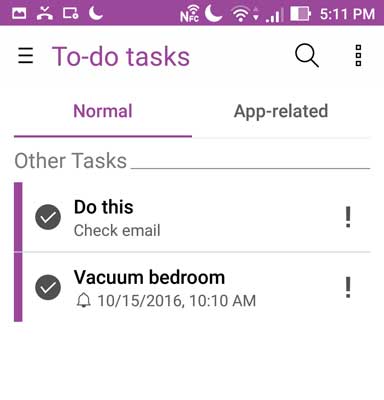
Rear Camera: Dark, Dull and Slow
Considering that most flagship smartphones have cameras that shoot at 12 megapixels, the ZenFone 3 Deluxe's 23-MP rear shooter looks really good on paper. A camera app that has a plethora of special modes and very detailed manual controls adds to that potential. Unfortunately, in practice, photos that I shot with the phone often suffered from dull colors, dim lighting and motion blur. Even worse, the shutter was downright slow, making it easy for me to miss important shots.
While leading phones such as the Pixel XL and Samsung Galaxy S7 Edge shoot photos instantaneously, the ZenFone 3 Deluxe took quite a bit longer. When shooting in my relatively well-lit office, the phone's camera took about 0.8 to 0.9 seconds to process after I first hit the button, compared to under 0.2 seconds on a Pixel XL. In a darker area, the phone took around 1.3 seconds or more to shoot. And, on a partly cloudy day in the park, it appeared to take even longer.
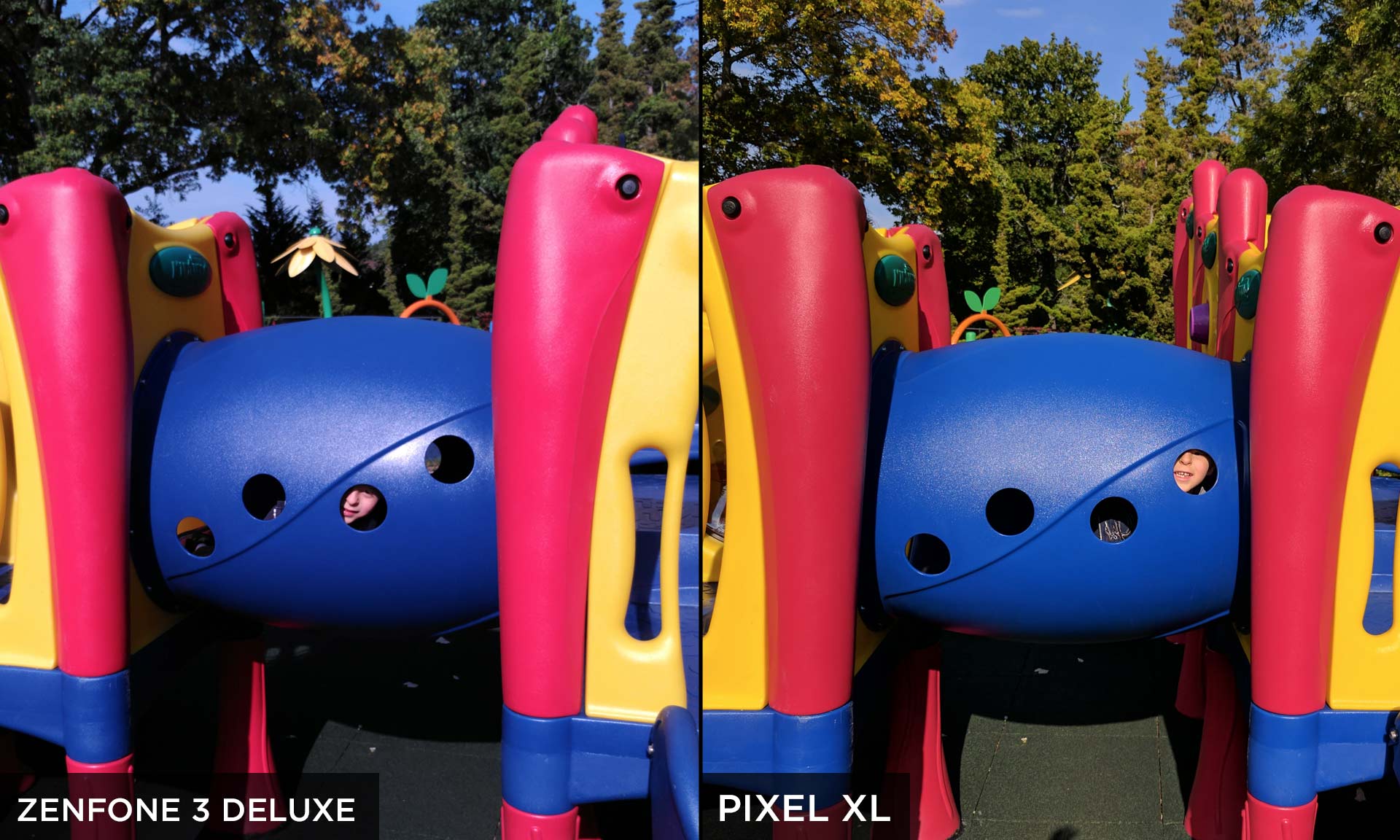
A few tenths of a second of additional processing time might not sound like much, but in practice it made the difference between my ability to capture my son as he was going down the slide or just missing him. The slow speeds also made for very blurry images when an object was moving or my hands weren't perfectly still. When I shot stills of toy race cars rolling around a track, they looked like blurry blobs, as did several pictures of a completely still set of toys that I shot in low light with the flash firing.
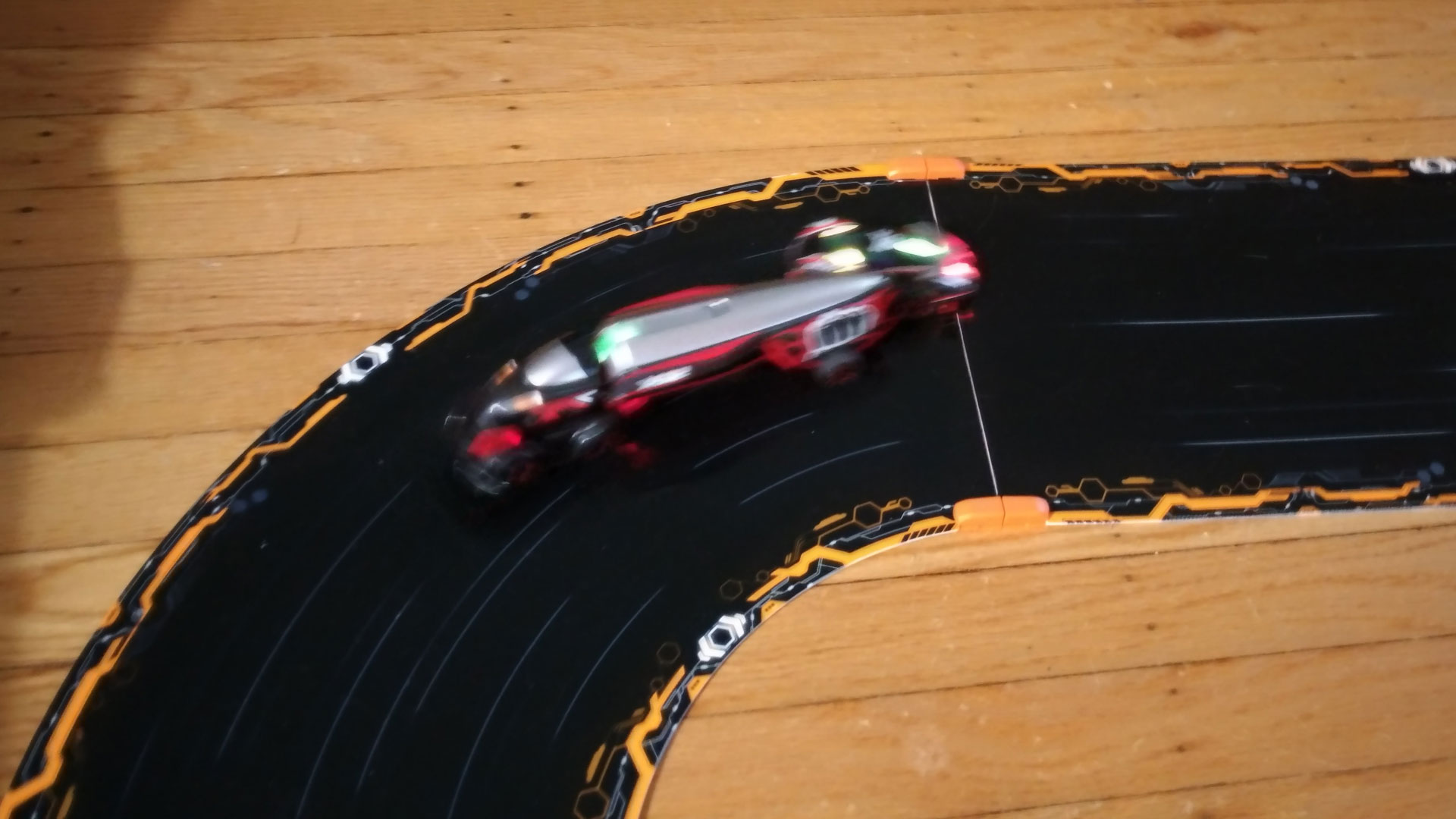
The photo quality also leaves a lot to be desired. Across dozens of pictures I took both outside and indoors, using the auto mode (with auto HDR) enabled (both defaults), the ZenFone 3 Deluxe's output was always significantly darker than that of the pricier Google Pixel XL, with colors that were much duller and less accurate. When I took an outdoor image of a field with the blue sky over it at midafternoon, the picture looked extremely dark, but the same subject captured on a Google Pixel XL appeared bright and sunny. An image of green bushes appeared dull and slightly whitewashed on the ZenFone, while it was vibrant and accurate on Google’s phone.

Full-HD videos that I shot with the camera suffered from the same weak brightness and colors. They were also jerky, even though I had video stabilization enabled.
Expert photographers may have better luck, if they spend time playing with the ZenFone 3 Deluxe's extensive manual controls, which let you adjust the ISO, white balance, shutter speed and more. The phone also has an impressive array of modes, including Beautification, Low Light, Night, Panorama, Depth of Field, GIF Animation, Time Lapse, Miniature, Smart Remove (gets rid of moving objects) and Super Resolution, which captures a 91-MP image by doing a series of scans.

My favorite modes were Time Rewind, which captures a second or two of images before your shot, and Children mode, which shoots as soon as it detects that your kid is facing the camera (a huge problem for many parents). I also enjoyed the slow-motion video capture, which operates at 120 frames per second, but I preferred the Pixel XL's ability to choose between 120 and 240 fps slow-motion shots.
MORE: 5 Ways to Improve Your Android Phone's Battery Life
Front Camera: Excellent for Selfies
The ZenFone 3 Deluxe's camera setup is like a reverse mullet: party in the front, sadness in the back. The 8-MP front-facing camera captured the best selfies I've taken in years. Enabled by default, the beautification feature made me look 10 years younger by smoothing out the fine lines on my skin, while still allowing fine details like the hairs in my beard to come through. Colors like the blue on my shirt were vibrant, though not completely accurate.

Besides the beautification mode's standard skin-smoothing ability, Asus' camera app allows you to fine-tune how your features look, making your face look thinner, your eyes wider or your skin and lips a slightly different shade than in real life. Some users will find these features helpful, while others may be offended by the notion of changing someone's eye shape or choosing from a limited pallet of skin tones in the makeup mode.
Battery Life
Running on T-Mobile, the ZenFone 3 Deluxe stayed well charged during some on-and-off use, but it lasted a modest 8 hours and 24 minutes on our battery test, which involves continuous surfing over 4G.
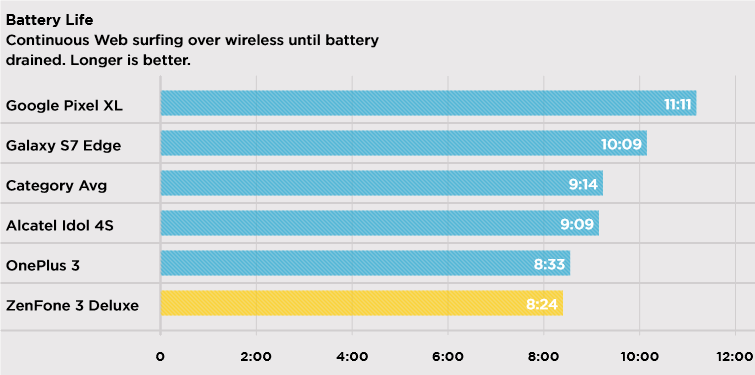
That runtime is on par with the OnePlus 3 (8:33), but below the smartphone category average (9:14), Alcatel Idol 4S (9:09), Google Pixel XL (11:11) and Samsung Galaxy S7 Edge (10:09).
Performance
With a speedy Qualcomm Snapdragon 820 processor and 6GB of RAM, the ZenFone 3 Deluxe offers really strong performance that's good enough for gaming or intense multitasking. Navigating around the OS was smooth as butter, whether I was surfing the web, changing settings or launching the camera app. When I played Asphalt 8, a graphically intense racing game, the action was slick and full of details like smoke and snow.
On Geekbench 4, a synthetic test that measures overall performance, the ZenFone 3 Deluxe scored a strong mark of 4,008 — well above the category average (3,115) and about on par with the Snapdragon 820-powered Galaxy S7 Edge (4,035). The Pixel XL and its Snapdragon 821 processor did slightly better (4,146).
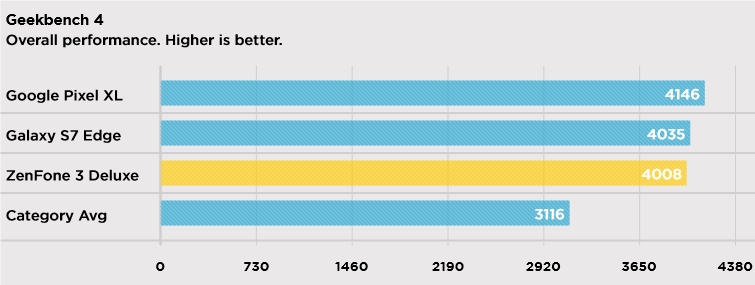
The ZenFone rang up an impressive score of 32,551 on the 3DMark Ice Storm Unlimited graphics benchmark — a mark that's more than double the category average (15,720) and comfortably ahead of all its competitors, including the Google Pixel XL (28,182), OnePlus 3 (30,491) and Galaxy S7 Edge (29,851).
Asus' handset took just 3 minutes and 26 seconds to convert a 204MB, full-HD video to 480p. That time is more than twice as fast as the category average (7:07) and over 30 seconds quicker than the S7 Edge (4:00). The OnePlus 3 and Pixel XL offered similar times, while the Alcatel Idol 4S was 12 seconds faster.
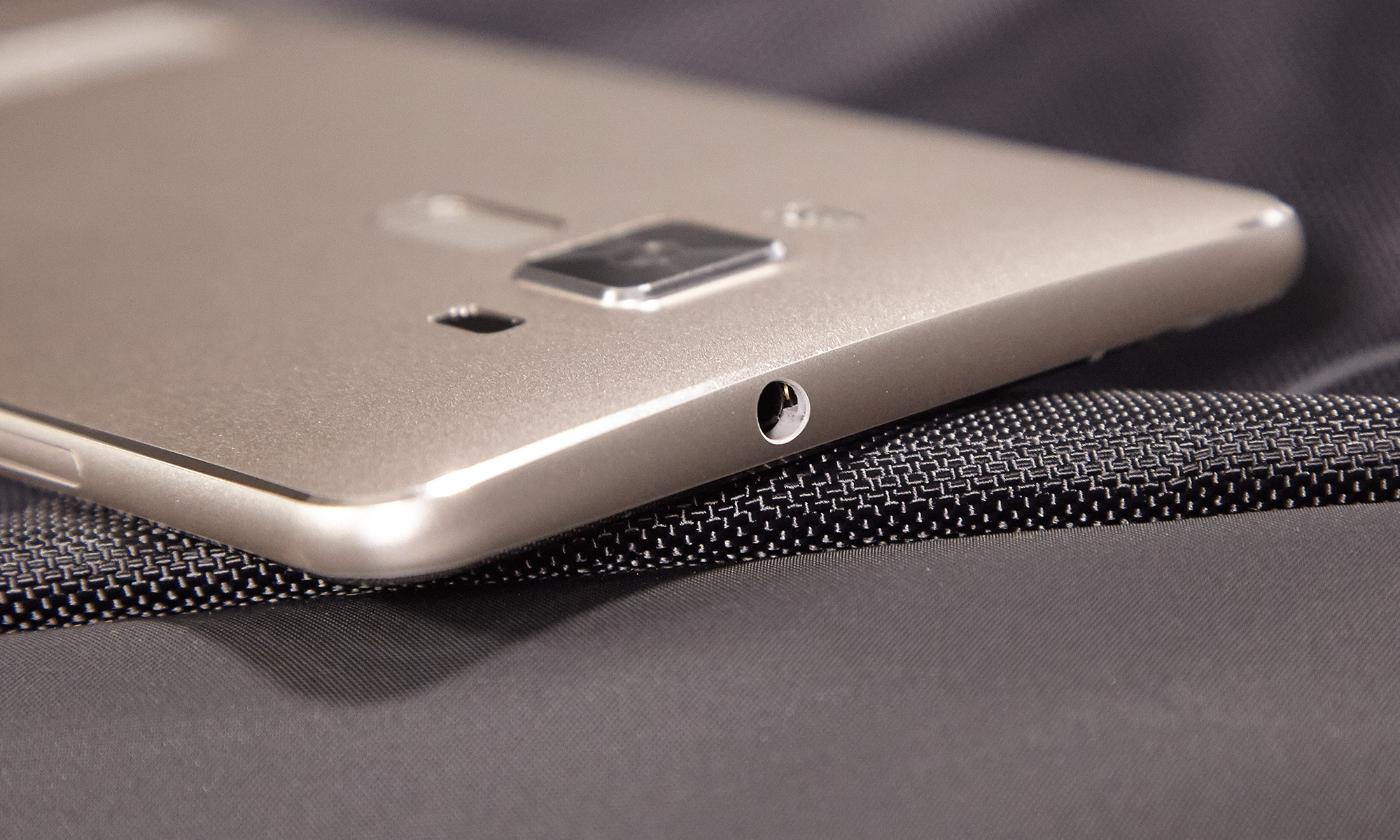
Configuration Options
The ZenFone 3 Deluxe is only sold unlocked in the U.S., and comes in both 5.7- and 5.5-inch screen sizes, each with slightly different specs. Our 5.7-inch review unit costs $499 and comes with a 1080p AMOLED display, a 23-MP camera, 64GB of storage and 6GB of RAM.
The 5.5-inch model goes for $399, but has an IPS display (also 1080p), a slower Qualcomm Snapdragon 625 CPU, 4GB of RAM, a 16-MP camera and the same 64GB of storage. We haven't tested the 5.5-inch model, but its use of an IPS panel gives us pause, because it can't possibly look as vibrant as the AMOLED screen on our review model.

Bottom Line
The ZenFone 3 Deluxe is a gorgeous phone with an eye-poppingly vibrant display and a UI to match. It's $500 price seems like a bargain when you compare this phone to similarly sized flagships that go for hundreds more, but budget-conscious users may prefer the $399 OnePlus 3, which has nearly identical performance, storage and screen quality.
Those who are willing to spend another $270 should purchase a Google Pixel XL, which has one of the best cameras on the market and lasts 3 hours longer on a charge. If you want an unlocked device with a strong sense of style, plenty of performance and great selfie capabilities, the ZenFone 3 Deluxe is a good choice, but the camera could be better.
- A Guide to No Contract and Prepaid Phone Plans
- Best Cheap Unlocked Smartphones
- Android Tips to Unlock Your Phone's Full Potential
